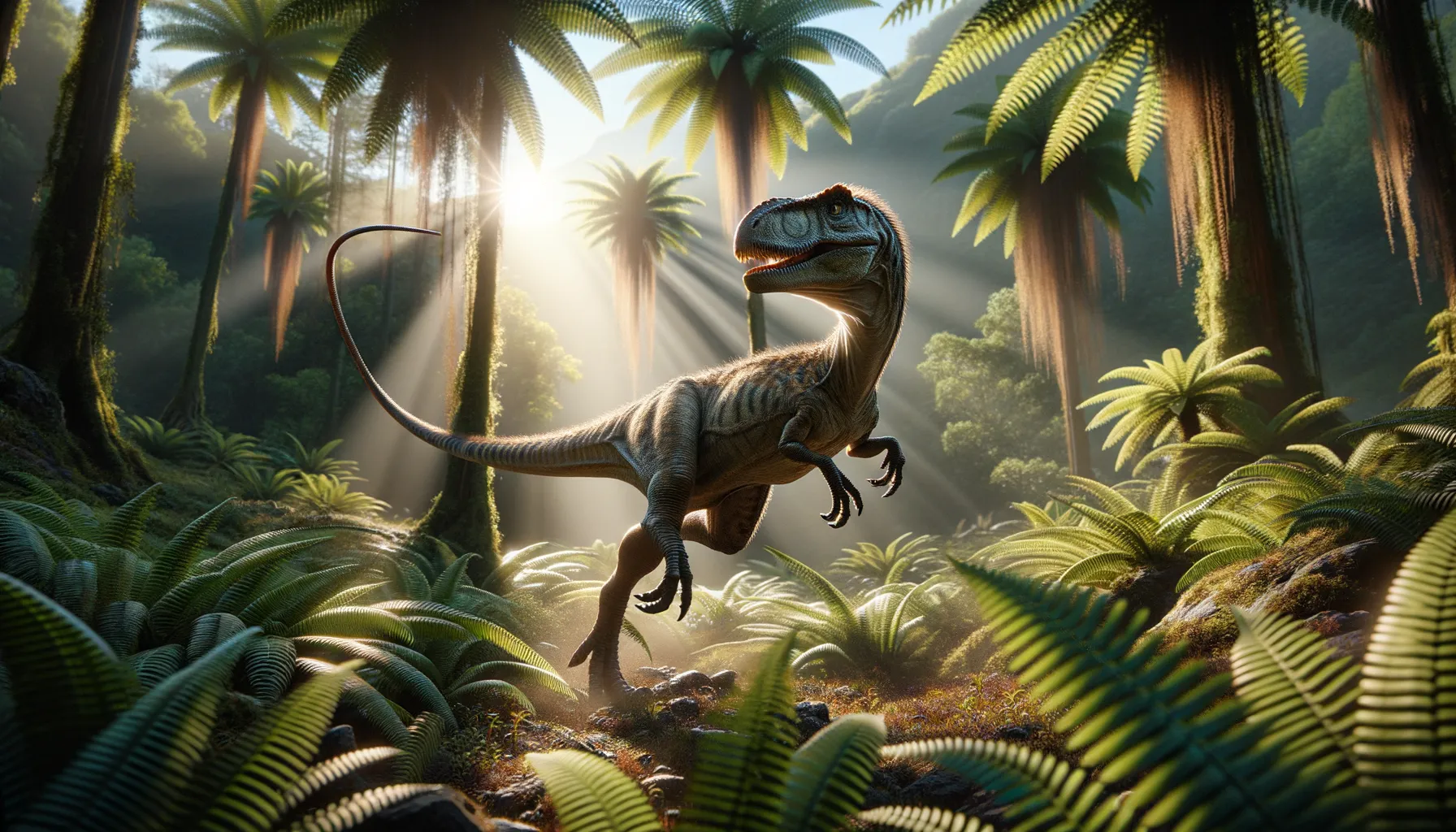
Agilisaurus
Speedy survivor of the Jurassic era!
Period
Jurassic
Length
Roughly 1.2 meters (4 feet) long.
Height
Around 0.9 meters (3 feet) tall.
Weight
Approximately 40 kilograms (88 pounds).
Agilisaurus was a small, nimble herbivorous dinosaur that roamed the earth during the Jurassic period. Its name, which means 'agile lizard', highlights its ability to move swiftly, likely aiding it in evading predators. This bipedal dinosaur lived in what is now China, where its fossils have been meticulously studied. Its small size and speed were well-suited for a life in lush environments rich in ferns and cycads.
Diet
Agilisaurus was primarily herbivorous, feeding on low-lying plants. Its diet likely consisted of ferns, cycads, and other soft vegetation. The need for a constant supply of food to maintain its energy influenced its habitat choices.
Hunting
Being a herbivore, Agilisaurus didn’t hunt other animals. Instead, it was more focused on foraging for plant material. Its speed would have been crucial to avoid predators rather than to catch prey.
Environmental challenges
Agilisaurus faced numerous environmental challenges, including avoiding large predators that roamed the Jurassic landscapes. Rapid climate changes and shifting vegetation patterns also posed risks to its survival. The need to stay nimble and alert helped it adapt to these pressures, maintaining a strategic advantage in its habitat.
Speed
Agilisaurus was likely quite fast, with agile movements.
Lifespan
Estimated to live up to around 10-20 years.
First discovery
First discovered in the Dashanpu Formation, China, in 1984.
Fun Facts
- Agilisaurus was a small, herbivorous dinosaur that lived during the Middle Jurassic Period, about 168 to 163 million years ago.
- The name Agilisaurus means 'agile lizard', reflecting its likely quick and nimble nature.
- Agilisaurus was discovered in the Sichuan Province of China, where its nearly complete skeleton was found.
- It measured about 2 meters (6.5 feet) in length, making it relatively small compared to many other dinosaurs.
- Agilisaurus belonged to the group of dinosaurs known as Ornithischians, which had bird-like pelvic structures.
- Despite its small size, Agilisaurus was well-adapted for running and likely relied on speed to escape predators.
- The nearly complete skeleton of Agilisaurus helps paleontologists understand more about early ornithopods and their evolution.
Growth and Development
Agilisaurus likely grew rapidly during the early stages of life to diminish vulnerability as prey. Juveniles used their speed and agility to escape threats while searching for sustenance. Growth slowed upon reaching maturity, focusing energy on reproduction and survival rather than further physical development.
Habitat
Agilisaurus lived in semi-arid regions with lush patches of vegetation. Its environment was characterized by a warm climate with seasonal changes that shaped its survival strategies. The landscape included conifer forests and open plains, providing ample foraging opportunities.
Interaction with other species
Agilisaurus coexisted with a variety of contemporary dinosaur species, which included both herbivorous and carnivorous dinosaurs. It likely remained distant from larger, more aggressive species, relying on its speed to navigate shared spaces carefully. Interspecies interaction mostly centered around competition for food and territory.
Natural lifespan
Agilisaurus could naturally live up to around two decades.
Reproduction
Agilisaurus likely laid eggs, as typical in most dinosaur species. Mating rituals and precise reproductive strategies are largely unknown, but it possibly involved intricate behaviors to attract mates. Parental care might have been minimal, with hatchlings capable of independent survival shortly after birth.
Social behaviour
Agilisaurus may have lived in small groups or solitary life, depending on food availability and predator presence. Social interactions were likely minimal beyond breeding seasons, focusing on individual or family unit survival.
Fossil locations
Fossils of Agilisaurus were found primarily in the Dashanpu Formation, located in Sichuan Province, China. This location has yielded a significant number of Jurassic period fossils. The geological conditions provided excellent preservation, allowing scientists to study its anatomy and ecological context.
